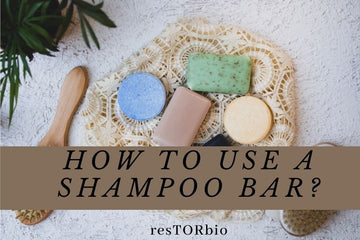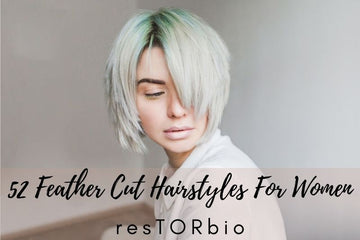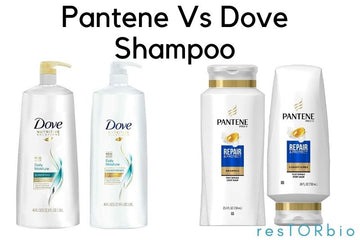
A shampoo bar is a solid bar of soap used to cleanse the hair. Unlike traditional shampoo, a liquid, a shampoo bar does not contain any chemicals or detergents.
This makes it a more natural option for those looking for an alternative to conventional shampoo. Here's how to use a shampoo bar.
How To Use Shampoo Bars In The Best Way
1. Do not buy anything containing Sodium Hydroxide (Lye).
2. Use other water types to avoid hard water.
3. Pre-shampoo baking soda rinse for your hair
4. Before you apply your hair, lather with your hands or on a sponge
5. Spread it evenly over your entire head
6. Use the proper technique to rinse your hair.
7. Use a natural acid rinse
First, Make Sure That Your Shampoo Bar Contains Shampoo
Although it may sound absurd, I can tell you that many eco-friendly shampoo bars on the market claim to be shampoo bars. They are made using the same process as soaps. They are high in water and undergo a process called saponification.

Lye, also known as sodium hydroxide, is a common alkaline element. However, when combined with oils, it chemically transforms into glycerine in soap form. When you purchase a shampoo bar, make sure that no oils have been mixed with lye. However, they should be used in their original condition.
- Coconut oil/sodium cocoate + Lye
- Palm oil/sodium palmate + lye
- Beef fat, tallow/sodium-tallowate + with sodium hydroxide
- olive oil/sodium Ollivate + sodium Hydroxide, among other things
If you see this combination on your shampoo bar labels, please don't buy it! It is just plain soap!
You may have tried washing the hair with soap, which I have. You will soon realize that soap is not suitable for hair. It will strip your hair of all its essential oils, leaving it dry, frizzy, and lifeless.
Many people say this shampoo is not right for me, and I can almost guarantee that it is because they haven't tried the actual thing. Please make sure you check the label before purchasing your chosen shampoo bar. Otherwise, none of the steps below will work.
How To Use Shampoo Bars With Hard Water
Hard water has high levels of minerals, such as calcium and magnesium. Hard water requires more shampoo to make a lather, but it can also be harder to rinse off your head thoroughly. It can leave a film on your hair that makes it rough and prone to getting tangled.
If you find that your water is extremely rich in minerals, you can wash your hair with boiled water. Or you could try distilled water.
How To Get Rid of Product and Natural Buildup Before Washing Your Hair
If you want your shampoo bar's effects to be strong and your hair silky, it is essential to prepare your hair for the swap before you wash it.
This step is often skipped by most people who have had negative experiences with shampoo bars. However, after trying many different methods, I believe this trick makes it work. This should be used in conjunction with an acid rinse following shampooing because hair can become coated with two types of residues.

Natural buildup: This is standard stuff that causes hair to become dirty. Our scalp glands naturally produce sebum and sweat. This, along with dry skin cells, can coat hair and skin. It is entirely normal.
The buildup of commercial products: These are the residues from the best shampoos and conditioners, and gels that have been mass-produced.
These products contain synthetically-made substances like silicones, silica, and waxes that are specifically made to give our hair volume and shine. They end up clogging our hair with a residue that can be difficult to remove over time.
These products can be pretty harsh and strip hair and scalp of natural oils. They are meant to moisturize the scalp and hair, so if you stop using them, your hair may need to rebalance its oil production.
This is why, when first starting to use natural products like natural soaps, most people report either dry hair (too many product buildups), greasy hair(unbalanced natural oils secretion), or a combination of both, often in different areas of their hair.
You only need to remove excess oil and eliminate any chemical residue left behind by your previous shampoo. What's the solution? It's straightforward! It's likely a simple baking soda rinse in your kitchen right now. If you live in an area with hard water, this will be a great option.
How to prepare it
- To make 1 cup (250ml), add one tablespoon of baking soda.
- Before you apply the shampoo, mix it well.
- Massage it into your scalp and hair, and let it sit for a while before you rinse with water.
Now your hair is ready for an eco-shampoo.
Dos and Don'ts of Shampooing Your Hair With A Shampoo Bar
Shampoo bars are more concentrated than liquid shampoos. This is why I advise you not to rub the shampoo directly onto your hair or scalp, especially during the transition.
DO: Use a soap pouch, an exfoliating glove, or a natural sponge to create a foamy lather.
Don't: Use only the shampoo bar produced to wet hair.
DO: Section your hair in several areas to get better results. Then, apply the shampoo foam to each section.
DO: Use circular movements to distribute shampoo. This will increase circulation and make your hair healthier.
Don't: Do not neglect areas of your head that may be more difficult to reach, like the nape of your neck or lower part of your head. This is especially important for long hair. If you rush, you might end up with oily or dry patches.
DO: Rinse the lather thoroughly after you're sure you've applied it evenly. Rinse once more.
DON'T: Don't rush the shampooing. If you don't want your hair to be weighed down, make sure you wash it off.
If you want to make for yourself one read the article: How To Make Shampoo Bars?
What A Difference A Rinse Makes In Apple Cider Vinegar Post-shampoo
Organic natural shampoo bars are gentler than commercially-made shampoos. This may mean that they take longer to remove all buildup from synthetic products.
You are applying an acidic rinse after shampooing is the best way to get rid of any excess.
This will allow you to re-establish the natural pH level of your hair and get rid of any shampoo residue.
You don't have to spend a lot of money on fancy products. You can make your homemade rinse with standard apple cider vinegar (yes, the same one you might already have in your home). ).
White vinegar is often used for naturally dry hair. However, it works well for all hair types.

This is how you can make your own Apple cider vinegar rinse for shiny locks:
- Mix 2/3 cup apple cider vinegar and 250 ml (1 cup) of lukewarm.
- Apply the mixture to your hair and scalp. If you prefer a deeper rinse, then you can massage your hair with an exfoliating glove. Don't be afraid to apply the shampoo all over your hair, from roots up.
Although I was using it to adjust to my plastic-free shampoo bar at the time, I discovered that it could also be used to address other hair problems.
- It is a natural treatment for dandruff
- It gives hair volume and shine.
- It untangles frizzy hair.
- It balances your scalp's natural oil production, making it especially useful for those with oily hair.
- It can be combined with vigorous head massaging to help unclog hair follicles and prevent hair loss from sebum accumulation of dead skin cells.
a) How Often Should I Use ACV (Acid Vinegar Vinegar Rinse).
You can start using shampoo bars for the first time if you're ready. I recommend that you use it after shampoo every 2/3 days to allow your hair to transition to the natural ingredients in your new shampoo.
After this, I typically do an acid rinse once per week. However, it can vary depending on my hair type. If you have dry hair, you may only need to do it once or twice per month.
b) Should I Rinse Vinegar With Water?
I don't do this because I want to feel the full effects of the rinse. However, if you like, you can use your DIY rinse to rinse your hair and allow it to absorb for about 2-4 minutes. Then, quickly rinse your hair with cool water to remove some of it.
Do not be alarmed by the vinegar smell. Many people are scared of the smell. However, I can assure you that the vinegar smell disappears once your hair is dried.
What Is The Duration of The Transition Period?
It does depend on the hair type you have.
It took me over two weeks to remove all the residue from the synthetic products that I had used before switching. I felt so strongly that I had to revert to the products I used, mostly my hair, that I probably cried defeat at least 12 times in the first two weeks. It worked, and it was amazing! My hair is healthier and more beautiful than ever since the change.

When I see people on social media stating that soap bars don't suit their hair, I feel the need to comfort them. I want to let them know that it is possible to keep going if they are patient and consistent.
This simple act can make your hair look natural and healthier. It also helps to save the environment from single-use plastics and toxic chemicals in our rivers and oceans.
Storing the Shampoo bar
1. Before you put your shampoo bar away, let it dry completely. To allow the shampoo bar to dry completely after you have finished showering, place it on a towel for between 5 and 20 minutes. The bar will eventually disintegrate if stored while it is still damp.
- Do not leave your shampoo bar in the bathroom.
- Your bar can be placed on a small plate or top of other cosmetic bottles.
2. For long-term storage, place your shampoo bar into a reusable container. A reusable tin should be the same size as your shampoo bar. To keep your dry shampoo bar clean and preserve it, you can place it inside.
- Shampoo bars are great for anyone on a road trip or flying to a vacation destination.
- You can prevent your shampoo bar from sticking to the bottom by cutting a piece of wax paper to the same size as your tin and placing it along the bottom. Next, place your shampoo bar on top.
3. Wrap your shampoo bar in an airtight plastic baggie as a water-tight option. Place your shampoo bar in a plastic bag after it has dried to preserve its integrity. Wrap the shampoo bar in a rubber band several times to keep any air out. You can also use a Ziploc bag as an alternative to the bag and rubber band.
- The plastic bag will seal out moisture and keep your shampoo bar fresh between uses.
4. You can use your shampoo bar until it runs dry. A shampoo bar should last approximately 80 washes, depending on how often you use it and what hair types you have. The shampoo bar is 100% natural, so you don't need to worry about it getting ruined. You can use the bar until it is gone!
FAQs
How Long Does Hair Take to Get Used to Shampoo Bars?
Your hair will adjust to natural products by producing more sebum. While some people experience no transition, others may feel it for 2-3 weeks or longer. A water softener is an excellent option if you live in challenging water areas.
How Often Should I Shampoo My Hair With A Shampoo Bar?
Some people may only need a few washes, while others may need to wait a few more weeks or even a month for everything to settle in. However, we have found that it is well worth it! Many people will never use liquid shampoo again after their hair is transitioning.

What Can Shampoo Bars Do For Your Hair?
It adds volume and shine to hair. It untangles frizzy hair. It balances your scalp's natural oil production, making it especially useful for those with oily hair.
Why Does My Hair Feel Waxy After Using The Shampoo Bar?
After washing the hair, you might feel a bit waxy when you first use a shampoo bar. This phenomenon is commonly known as the purge or the waxes in the shampoo-bar community. It could be due to either a bad reaction to hard water or an adjustment to your scalp's oil production.
Conclusion
Shampoo bars are a lot of fun to use. The natural properties and fragrances make for an enjoyable experience. It is worth a try for those who are looking for an alternative.
They are not for everyone, but if you can get past the simplicity of using them, you may enjoy the natural feel. resTORbio hopes this was helpful!




